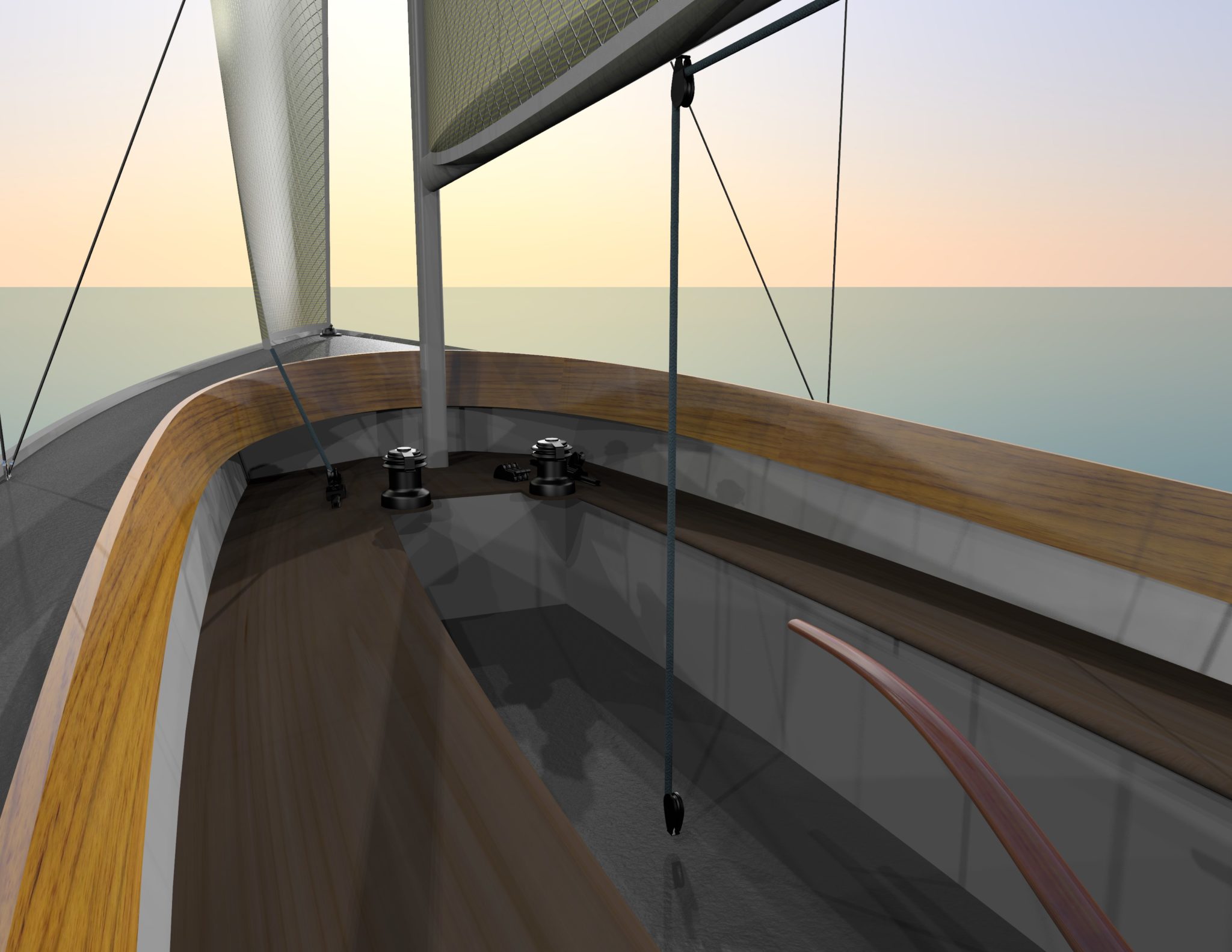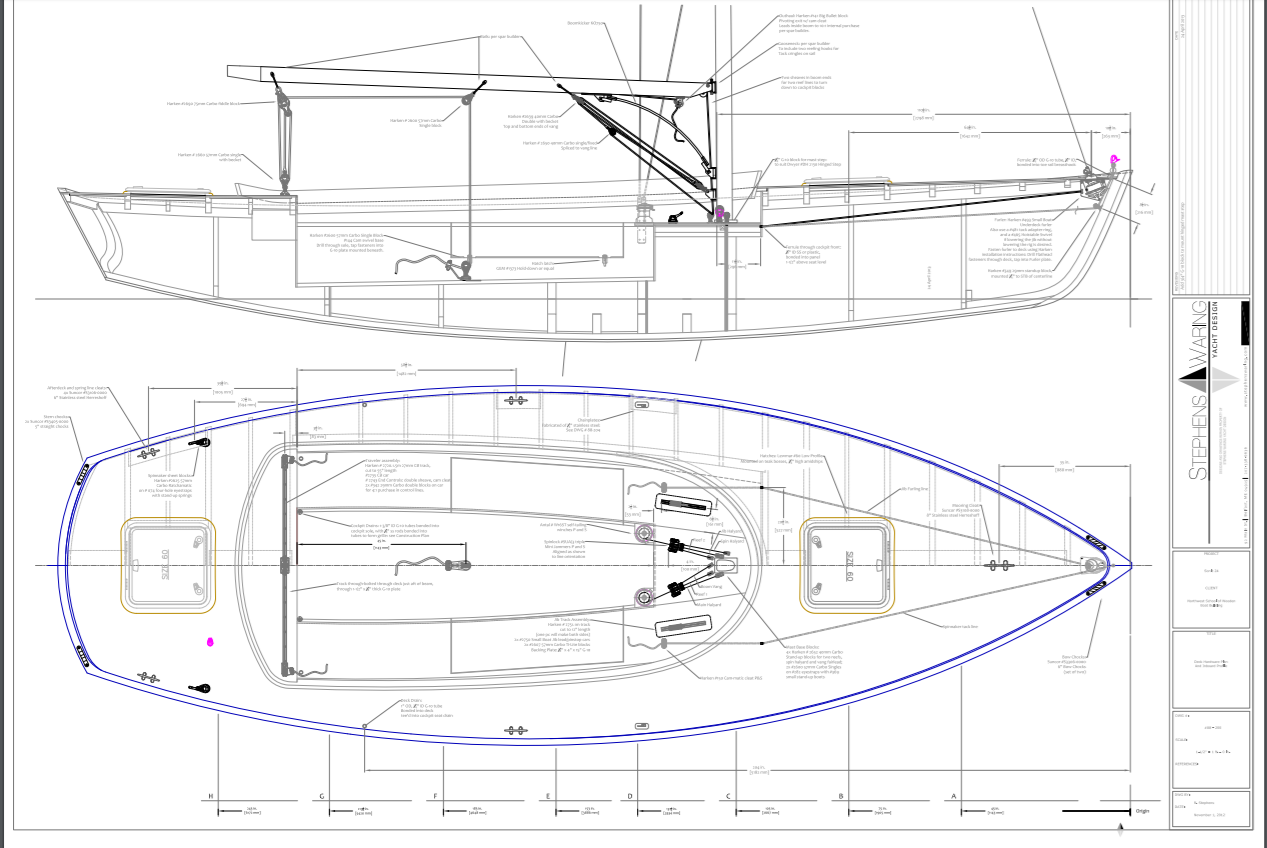Marine Engineering 111: Why is my cockpit eh … a cockpit?

We all sit in them, we stand in them, haul lines in them, and have lunch in them. But do we know why a cockpit is what it is? In many boats, the answer is no. Cockpits seam to slouch in as pre-ordained stories. And that’s a shame, because roughly 7 out of the 10 of the design choices in a vessel involve the design and function of a cockpit. Cockpits expose the inner guts of a boat to the elements and bad luck. Soles that are too low can sink a vessel through downflooding. And it’s the cockpit that puts your head up near a swinging boom in a crash gybe.
So with the sailing season winding down, we thought now was a good time to unravel the narratives in cockpits with one of our favorite designs: Azulita, a 24-foot daysailer currently serving her owner with love on Lake Michigan. She’s nothing more than a floating platform for sailing: No cabin. Nothing but air below and places to tuck away gear and sails. Clean, simple, no real systems, and no head.
She’s nothing but the exposed details of why cockpits are what they are.
A pit to get the work done.
It’s sounds simple, but oh boy, does this get forgotten: The cockpit is nothing more than the central place of action and inaction. It is the focal point of where the sailing gets done, and — after the day’s done — a place to watch the sunset over dinner. The need for comfort and down-time in your cockpit is the pride of any owner and crew. Therefore, all the handling lines that matter either must run to a cockpit or be accessed from it. All the people on board need a place to do their jobs in safety and efficiency. And the room for leisure and means to lay into a good time.
Organizing those contrasting functions begins with the basic human form: We all need to stand and sit, hold the tiller and pull the sheets. Our favorite example of the effects of physiology on cockpits is what English design-legend Nigel Irens drew for Dame Ellen MacArthur’s world-beating trimaran B&Q. Even though this was a massively powerful, ocean-going multihull, the cockpit for the 5’ 3” offshore racer was almost preposterously tiny. Far too small for 6-foot-plus tall people, who like their beer too much, like us. There was no place for our butts, our arms and our heads. So on Azulita, a boat for more mortal sailors, we were sure to open up the space for a helmsman, a mainsail trimmer and a few crew.
That meant Azulita needed wide enough beam, carried well enough aft for all the knees, backrests and places for feet. In fact, Azulita is so committed to maximizing it’s cockpit experience, it grew to become the entire boat.
A floating cockpit.

Once it dawned on us that the DNA of this boat was the cockpit, we were off to the design races: A wraparound coaming — a modern lift from the classics, like the Herreshoff 12 ½ daysailer — provided good protection and backrest comfort. We dug into the ergonomics of how to lead lines and mount the two winches inside that coaming, on the seats themselves. We also kept the jib sheets and tracks inside the cockpit, where they are easy to work. We cut the lifelines, since the cockpit is big and deep and work on deck is so minimal. The boat is so small, that a cuddy cabin detail would have been clutter. Instead, we have simple deck hatches both on the fore and aft decks. Each that accesses the space below.
You probably won’t camp in this boat, though you could. But you will be able to get at everything in this boat. And that’s all part of the all-business, let’s-go-sailing story of Azulita.
Will it bail?
Now, here’s the trick about cockpits: Getting all these different elements of ergonomics, layout, and design philosophy to work in a single functioning real-live 3D space. The clearest example of the offsetting relationships cockpits require is ensuring this boat will drain on its own if ever it took on water of any scale. In other words, what does it take to make Azulita self-bail, no matter what?

Self-bailing is all about getting the right seat and sole heights, and matching them to clean coaming lines to balance out winch, sheet and lead locations to all happen above the water line. Beefy scuppers with seacocks need to have room to breath and flow water back to the sea. Click here to inspect full plans, to see the details.
Note how the sole of the cockpit is raked aft. And then set high enough above the water for good drainage at heeled angles; but still low enough to keep the crew from popping out of the boat aesthetically and physically when heeling. See the balance between the height of sheer, the height of cockpit sole and the height of the seats? And how they must work with the coaming structure, lines, winches and all the rest.
All that makes Azulita a survivable platform in most weather. That’s a pretty slick trick for what is essentially a 24-foot open boat.